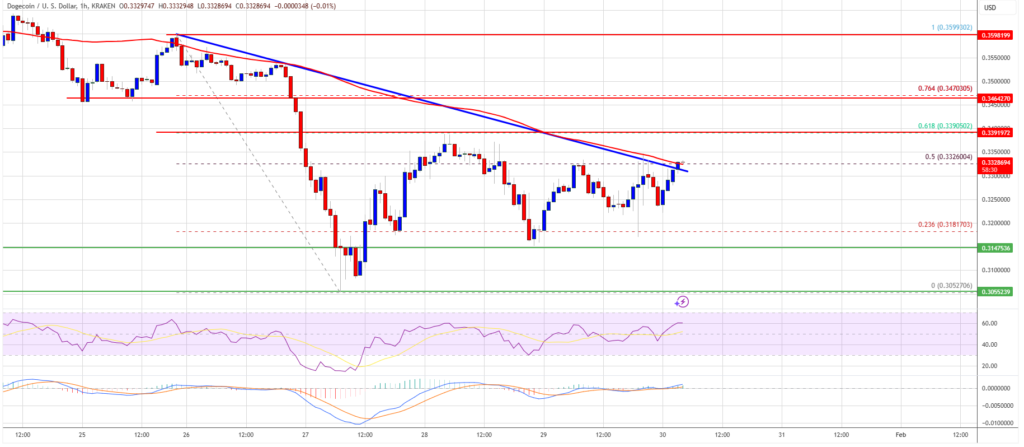One of the most well-known cryptocurrencies, Ethereum (ETH), is known for its strong blockchain technology supporting smart contracts and distributed apps (dApps). Ethereum’s price has shown notable volatility recently, even with its technological developments and expanding ecosystem.
Ethereum Rise and Volatility
Ethereum has experienced a meteoric rise since its inception, reaching new all-time highs as the platform expanded its use case. From DeFi applications to the burgeoning NFT market, Ethereum has solidified itself as a pillar of the blockchain space. However, the price of ETH has been anything but stable recently. After reaching a high of $4,800 in late 2021, Ethereum entered a period of consolidation. Since then, it has faced significant downward pressure, exacerbated by broader market volatility and global economic factors.
 Ethereum has failed to maintain the momentum needed to break its previous all-time highs, and as of mid-2025, it is caught in a range of unpredictable fluctuations. Many in the cryptocurrency community are speculating that a combination of technical and fundamental factors could cause Ethereum to face a significant crash, possibly dropping as low as $2,350.
Ethereum has failed to maintain the momentum needed to break its previous all-time highs, and as of mid-2025, it is caught in a range of unpredictable fluctuations. Many in the cryptocurrency community are speculating that a combination of technical and fundamental factors could cause Ethereum to face a significant crash, possibly dropping as low as $2,350.
Ethereum Price Decline
One of the key indicators pointing to Ethereum’s potential price crash is its technical formation. A pattern that has been developing recently is the formation of lower lows. This pattern is a critical signal that Ethereum’s price is failing to push higher with each cycle and is making progressively lower bottoms instead. Lower lows are a typical sign of a bearish market trend and often precede further price declines.
The current price action of Ethereum, which has struggled to break resistance at $2,800 to $3,000, highlights that bullish momentum is weakening. Ethereum consistently fails to sustain its upward momentum, and every recovery encounters heightened selling pressure, signifying a deficiency in demand and buyer fatigue. These technical factors suggest that Ethereum could face further declines and eventually crash to lower support levels, such as $2,350.
Ethereum Price Levels
Understanding Ethereum’s possible future price movements depends critically on support and resistance levels. These levels create psychological barriers where price reversals are likely to happen. Ethereum has encountered notable opposition in the range of $2,800 to $3,000. Selling pressure rises with each Ethereum approach to this level, dragging the price down.
On the downside, $2,350 is a vital support zone. Many analysts and traders are focusing primarily on this level. Should Ethereum fall short of this level, there may be a collapse that causes more price loss. If Ethereum breaches this critical support, it could potentially access additional lower levels, intensifying the bearish trend and leading to widespread panic selling.
Ethereum Market Challenges Ahead
Regulatory Impact on Ethereum
With many nations still developing their position on digital assets, the global regulatory scene around cryptocurrencies is still in its early years. The market would suffer if authorities enforced rigorous rules on Ethereum or its ecosystem, primarily aimed at decentralized finance (DeFi) apps or Ethereum-based assets. Regulatory moves might generate ambiguity, eroding investor trust and weakening Ethereum’s value.
Macroeconomic Impact on Ethereum
Furthermore, Ethereum’s price is quite sensitive to more general economic patterns. In recent months, rising interest rates, global inflation, and economic uncertainty have caused conventional financial markets to adopt a risk-off stance. Investors looking for safe-haven assets should lower their exposure to Ethereum, a highly risky asset. This tendency might lower demand for ETH, which would help to explain any price drop.
Furthermore, there has always been a connection between macroeconomic developments and the state of cryptocurrencies. A recession or unstable finances could cause investors to leave riskier assets, exerting more negative pressure on Ethereum and other Cryptocurrency markets.
Ethereum Upgrade Concerns
Ethereum’s shift from Proof of Work (PoW) to Proof of Stake (PoS) has been a major development in the network’s evolution. While PoS offers benefits in terms of scalability and sustainability, there are still concerns about the long-term implications of the upgrade. Any technical difficulties or delays in Ethereum 2.0 could negatively impact investor sentiment, contributing to price declines. Additionally, if the upgrade fails to meet expectations, it could shake confidence in Ethereum’s future, fueling bearish sentiment.
Ethereum Challenges Ahead
Although Ethereum’s near future seems negative, it’s crucial to recognize the network’s long-term possibilities. Still the top platform for distributed apps and smart contracts, Ethereum’s acceptance is only getting stronger. Notwithstanding its difficulties, the Ethereum 2.0 update is a first step toward raising the network’s scalability and durability.

Ethereum’s price does, however, provide severe short-term difficulties; a drop to $2,350 is quite likely as well. Investors should approach the market carefully and closely watch technical indications and fundamental changes. Ethereum might be able to rebound if it can get beyond significant support levels; yet, additional downside could be unavoidable should critical levels be breached.
Final thoughts
Technical indicators suggest a potential decline to $2,350 as the price of Ethereum approaches a pivotal point. Lower lows and the inability to break significant barriers point to a bearish trend. Further hazards to the short-term price perspective of the network are regulatory uncertainty, the world economic situation, and the switch to Ethereum 2.0. Investors must stay alert and ready for more volatility in the coming weeks.

